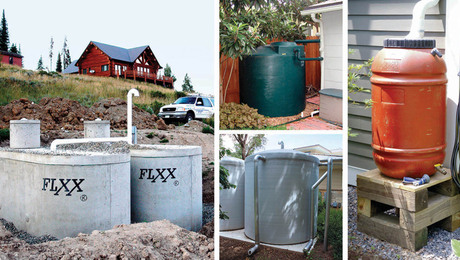My roofing and siding contractor is recommending that I use Pro-Master Roof Shield UDL from Berger Brothers as a housewrap. Has anyone used this or does anyone have an opinion on it? My original thought was to go with Typar.
Discussion Forum
Discussion Forum
Up Next
Video Shorts
Featured Story

There's a constant source of clean water for you to use, and all you have to do is collect it.
Featured Video
SawStop's Portable Tablesaw is Bigger and Better Than BeforeHighlights
"I have learned so much thanks to the searchable articles on the FHB website. I can confidently say that I expect to be a life-long subscriber." - M.K.

















Replies
Roofing underlayments are impervious membranes, where housewraps are designed to shed water and pass vapor.
Using a roofing underlayment would, I suspect, create a moisture trap between the membrane and your sheathing, which would not be good!
When I use housewraps (as opposed to felt), I prefer TYPAR; it's easier on the eyes (I hate that white stuff on a sunny day) and has a longer exposure rating than the others.
Notchman,Thanks for the input. Believe it or not, I tried put a piece of the Roof Shield up to my mouth and blew against it, but I still couldn't tell if it was porous. I guess I'll go with my original plan with Typar. As for easier on the eyes, the Typar will be overlaid with Homeslicker, so I don't think it'll be too easy on the eyes until the shingles go up.
the test you want to try is holding a piece up to your mouth and trying to suck air through it. In other words, try to breathe through it as opposed to blowing through it. That's the test to see if it's an air barrier.
If you want to test it for permeability (water vapor), hold a piece over some steam (don't burn yourself) and then hold something else over the sample piece. If steam condenses on the object above the sample, you know it passes water vapor.
Either way, I'm pretty sure that it would a bad move to use roof underlayment on sidewalls. sounds like a guy who is only concerned with waterproofing, and not educated on water vapor. Justin Fink - FHB Editorial
Your Friendly Neighborhood Remodelerator
Generally the difference between synthetic house wrap and synthetic roof underlayment is the perm rating. Perm rating, or permanence is the ability of a material to pass water vapor. House wraps and black felt paper or "tar paper" have perm ratings above 1, often well above typically in the 5 to 60 range. Most synthetic roof underlayments have a perm rating well below 1 classifying them as a vapor barrier. You don't want a vapor barrier on the exterior of your home unless you live in a humid cooling only climate in which the primary water vapor source is from the exterior of the home. This is particularly true if there is to be a vapor barrier on the interior too, since you never want a double vapor barrier, effectively trapping moisture between.
Not to get on a tangent but the use of vapor barriers anywhere is sidewalls in humid climates is up for debate these days because of the fear of trapping moisture and creating mold conducive environments.
Further, of equal importance to the fact that some type of sheathing paper is used is that it is properly detailed to inhibit the intrusion of liquid water.
Nicely said.
Except I thought "perm rating" meant permeability?
OK - so spelling isn't my forte and the spell checker failed me... :-)
Correction accepted :-)
Edited 5/20/2007 11:08 pm ET by Matt